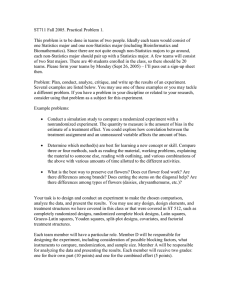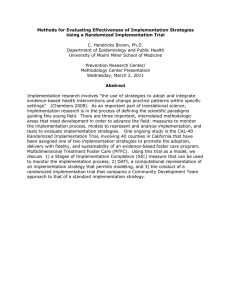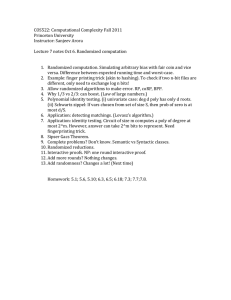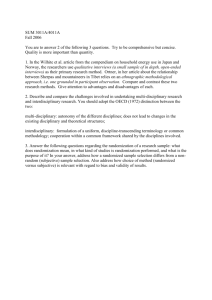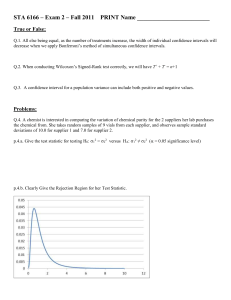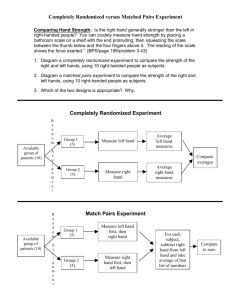Completely Randomized Designs
advertisement
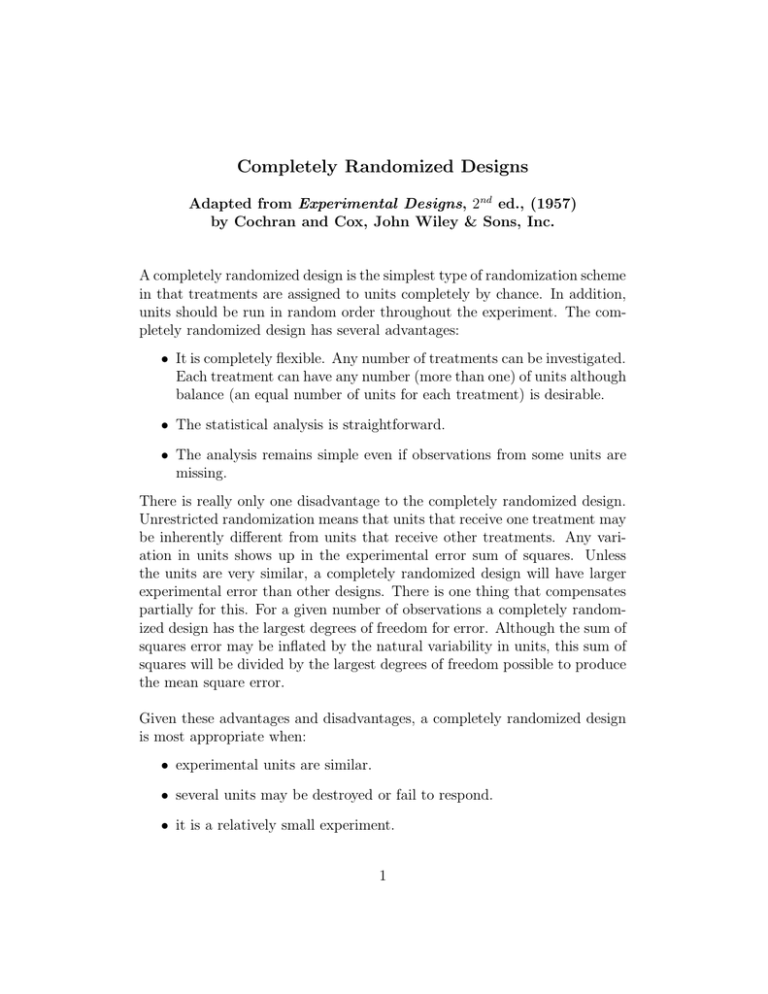
Completely Randomized Designs Adapted from Experimental Designs, 2nd ed., (1957) by Cochran and Cox, John Wiley & Sons, Inc. A completely randomized design is the simplest type of randomization scheme in that treatments are assigned to units completely by chance. In addition, units should be run in random order throughout the experiment. The completely randomized design has several advantages: • It is completely flexible. Any number of treatments can be investigated. Each treatment can have any number (more than one) of units although balance (an equal number of units for each treatment) is desirable. • The statistical analysis is straightforward. • The analysis remains simple even if observations from some units are missing. There is really only one disadvantage to the completely randomized design. Unrestricted randomization means that units that receive one treatment may be inherently different from units that receive other treatments. Any variation in units shows up in the experimental error sum of squares. Unless the units are very similar, a completely randomized design will have larger experimental error than other designs. There is one thing that compensates partially for this. For a given number of observations a completely randomized design has the largest degrees of freedom for error. Although the sum of squares error may be inflated by the natural variability in units, this sum of squares will be divided by the largest degrees of freedom possible to produce the mean square error. Given these advantages and disadvantages, a completely randomized design is most appropriate when: • experimental units are similar. • several units may be destroyed or fail to respond. • it is a relatively small experiment. 1
